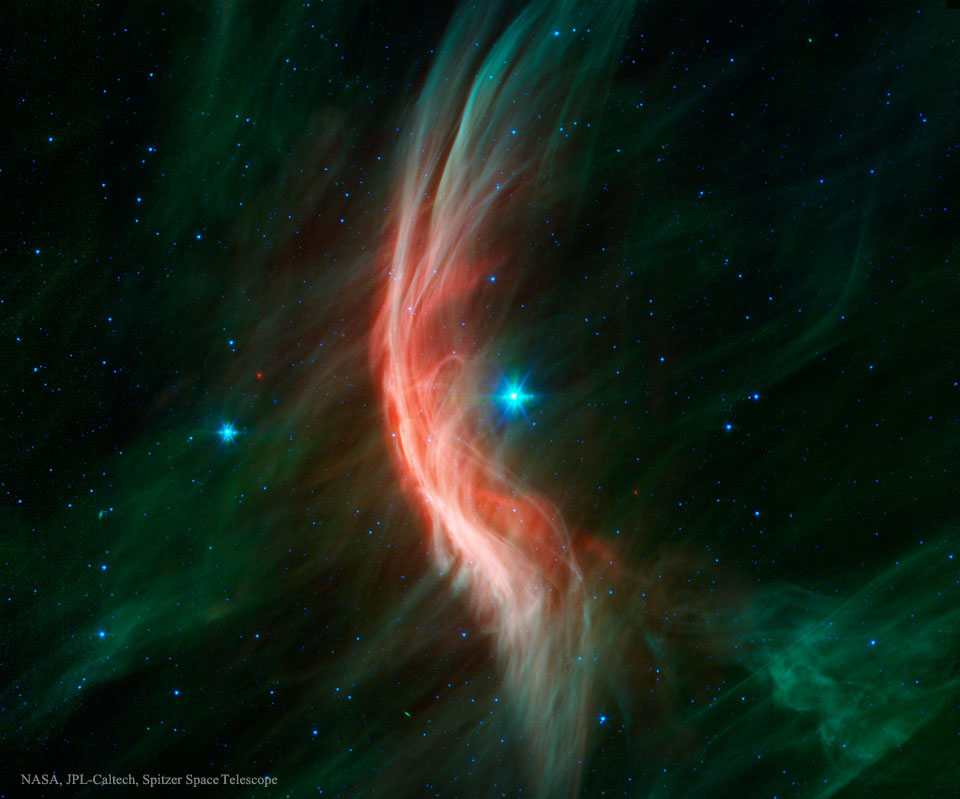2024年1月4日
Zeta Oph: Runaway Star
Image Credit: NASA, JPL-Caltech, Spitzer Space Telescope
Explanation: Like a ship plowing through cosmic seas, runaway star Zeta Ophiuchi produces the arcing interstellar bow wave or bow shock seen in this stunning infrared portrait. In the false-color view, bluish Zeta Oph, a star about 20 times more massive than the Sun, lies near the center of the frame, moving toward the left at 24 kilometers per second. Its strong stellar wind precedes it, compressing and heating the dusty interstellar material and shaping the curved shock front. What set this star in motion? Zeta Oph was likely once a member of a binary star system, its companion star was more massive and hence shorter lived. When the companion exploded as a supernova catastrophically losing mass, Zeta Oph was flung out of the system. About 460 light-years away, Zeta Oph is 65,000 times more luminous than the Sun and would be one of the brighter stars in the sky if it weren’t surrounded by obscuring dust. The image spans about 1.5 degrees or 12 light-years at the estimated distance of Zeta Ophiuchi. In January 2020, NASA placed the Spitzer Space Telescope in safe mode, ending its 16 successful years of exploring the cosmos.
Tomorrow’s picture: at the heart of Orion
天市右垣十一: 速逃星
影像提供: NASA, JPL-Caltech, Spitzer Space Telescope
说明: 在这幅令人赞叹的红外光影像里,速逃星天市右垣十一就像一艘滑过宇宙海之船舰,产生了这道弓形震波。在这张假色影像中心附近,质量大约是20倍太阳的泛蓝天市右垣十一,正以每秒24公里的速度向左飞奔。它前方强烈的恒星风,挤压并加热富含尘埃的星际物质,造成了这道弓形震波前沿。为何这颗恒星会高速运动呢?天市右垣十一原来可能是双星系统的成员之一,质量大于它的伴星之寿命较短,当这颗伴星发生超新星爆炸、耗损质量的同时,天市右垣十一也被抛出这个系统。位于蛇夫座方向的天市右垣十一,离我们约460光年远。它的光度约莫是太阳的65,000倍,所以如果不是周围包裹着遮光的尘埃,它会是地球夜空的亮星之一。以天市右垣十一的距离来换算,这幅宽约1.5度的影像,跨幅约有12光年。在2020年1月,美国航空航天局让斯皮策太空望远镜进入安全沉睡模式,终结了它16年来探索宇宙的成功任务。 (Zeta Oph, Zeta Ophiuchi 天市右垣十一、韩)
明日的图片: at the heart of Orion



